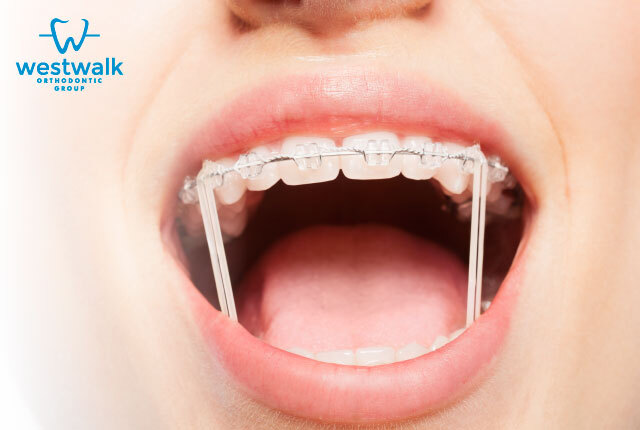What Do Rubber Bands Do for Braces?
A successful orthodontic treatment relies on several elements working together. Your orthodontic appliances are complex tools that your orthodontist uses to gradually and safely moves your teeth into the right position. One of the parts that help achieve treatment goals is elastics or rubber bands, also called orthodontic ligatures. What are they? When will you have to use them?
Let’s go ahead and review why they’re such a crucial component of your braces and why you should take good care of them.
What Can Rubber Bands Do for Your Braces?
So, when we talk about the elastics orthodontists use to enhance the function of your orthodontic appliance, we have to acknowledge that ligatures and rubber bands are not strictly the same. In essence, they both apply pressure on your teeth, but that is true of every part of your braces.
Rubber bands usually apply targeted force over a specific tooth and are great at closing spaces between two adjacent teeth. Their use in correcting bad bites, such as the cases of underbites, overbites, and open bites, is quite efficient. You’d use these rubber bands by placing them over a hook on your brackets. The hook part may look different depending on the target tooth, and you’d do well to wear them 24/7 or only take them off when you clean your teeth or go grab a bite.
Ligatures, on the other hand, are the elastics we use to hold the archwire in place. It’s this piece that you can customize, by the way. You can choose any color your orthodontist has available to add a personal touch to your braces as they keep the wire well in place while guiding the force necessary to push the brackets and your teeth to their new location. These ligatures are critical, so expect your orthodontist to check them during every visit.
You should also keep in mind that these ligatures will require replacements fairly often. After all, their nature is not to be a rigid piece that never moves; instead, the materials used have a shorter useful life than the rest of your braces’ parts. Depending on their size, force capability, and materials, elastics will see various uses. For instance, orthodontists might use latex rubber bands but switch to synthetic ones if you have any allergic reactions to the material.
Types of Rubber Bands for Braces Depending on Their Use
- Class I. These rubber bands get placed horizontally to link brackets on the same arch and between adjacent teeth to close gaps between them.
- Class II. Instead of connecting only adjacent teeth on the same arch or jaw, they can connect teeth from your upper jaw to the molars of the lower jaw. An orthodontist can use these elastics in the correction of excess overjet or overbite.
- Class III. As opposite to class II rubber bands, class III rubber bands will connect the teeth on your lower jaw to the molars of the upper jaw. As they pull back on the lower jaw, your orthodontist will use them to correct an underbite.
- Vertical. As their name suggests, they link teeth from one jaw to the ones directly above or below them, depending on the case.
- Cross. This is a bit more complex as they will connect teeth on both jaws, often crossing over your front teeth, to correct a crossbite.
How to Put Ligatures On
Knowing how often you’ll have to put on these rubber bands on your braces, it’s crucial that you know how to do it correctly and efficiently. You might have to change them up to 5 times a day.
The best orthodontist in Norwalk will make sure to show you the attachment points for your rubber bands, and you should pay close attention, so you know where they go and direct the force accordingly towards your teeth.
Try to keep your jaws closed and bite down, so you don’t have to stretch the rubber bands as much. Your index and thumb can pinch on the elastic band and attach them to the hook on the selected bracket. You can also rely on some plastic tools to attach the rubber bands with ease. The plastic hooks can pull the rubber band and link the desired brackets on your first try.
Certainly, your rubber bands may feel awkward at first, but with enough practice, you’ll become a pro. Remember to use your fingers to guide the bands into place. Also, use a mirror to know where you’re going.
So remember:
- Bite down and keep your teeth together.
- Get enough replacement rubber bands as you’ll go through them quickly.
- Call your orthodontist if your bands keep falling off.
Get in Touch With Your Orthodontist in Norwalk
Keep in mind that Westwalk Orthodontic Group has a team of board-certified orthodontists and passionate staff that wish to help you achieve your dream smile. We want to help you reach your treatment goals efficiently, so make sure to swing by and set an appointment so we can start your orthodontic treatment together.

